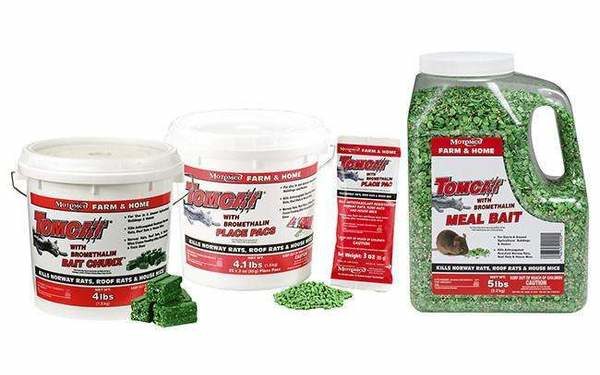Bromethalin Toxicity in Dogs and Cats

This article was originally published by Redbank Veterinary Hospitals, it was written by Dr. Glass, Dr. Song, and Dr. Scarano, Neurology & Neurosurgery Department.
A dramatic increase in the number of pets, especially cats, dying from exposure to a rodenticide, called bromethalin, has been recognized by doctors and other referral clinics along the east coast in the past year. Bromethalin is the active ingredient that is marketed under a variety of brand names, the most common is called TOMCAT® rodenticides.
History:
In 2008 the Environmental Protection Agency (EPA) reviewed rodenticide used in the United States. The EPA made the following recommendations at that time:
- Rodenticides marketed to private consumers are to be sold in tamper-proof bait stations,
- The EPA prohibited the sales of loose bait products to individual consumers,
- The EPA imposed package size, use, and sale/distribution restrictions on the more common and widely used so-called “second generation” anticoagulant rodenticides such as brodifacoum, bromadiolone, difenacoum, difethialone.
This last point has led to the increased use of bromethalin rodenticides, which unfortunately caused the dramatic increase in deaths amongst our pets.
By 2013, the government prevented consumer sales of these “second generation” anticoagulant. These anticoagulants prevent the clotting of blood in rodents that consumed the poison. In the past, pets, such as cats and dogs, which ate the “second generation” anticoagulant poison itself or ate poisoned mice or rats could be treated successfully with an antidote, Vitamin K, by veterinarians.
Unfortunately, these anticoagulant second-generation rodenticides have largely been replaced by rodenticides containing bromethalin. This rodenticide, unlikely the earlier used second- generation rodenticide, has no known antidote and is deadly to our pets!
Bromethalin is a poison that prevents normal regulation of potassium in the brain. When ingested, the bromethalin causes fluid to abnormally accumulate in the brain and spinal cord, causing severe swelling of these tissues. When the brain and spinal cord swells, the rodent becomes uncoordinated and wobbly, begins to seizure and eventually dies.
Unfortunately, cats and dogs will sometimes ingest this rodenticide either directly or indirectly by consuming a poisoned rodent. In particular, cats that hunt rodents, tend to ingest poisoned rodents that once affected by the poison walk and run poorly and are more easily captured by a cat. And, even worse, cats seem to be much, much more sensitive to the poison then dogs.
Because bromethalin is so toxic to cats, it is recommended that cats not be allowed outdoors unsupervised. This is especially true in cats that hunt. Owners should be aware that indoor cats can also be poisoned if the cat ingests a rodent in the home that has consumed some of the poison.
Unfortunately, once the neurologic signs develop in these cats, most of these pets will not survive. Therefore, the best treatment is prevention. When a rodenticide is needed, consider rodenticides other than bromethalin. Also, keep rodenticides away from areas that pets can access. Finally, consider using other rodent prevention strategies in areas accessed by your pet.